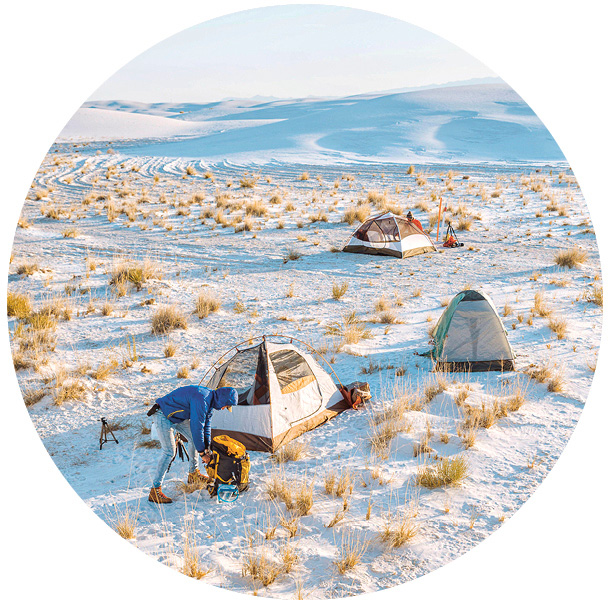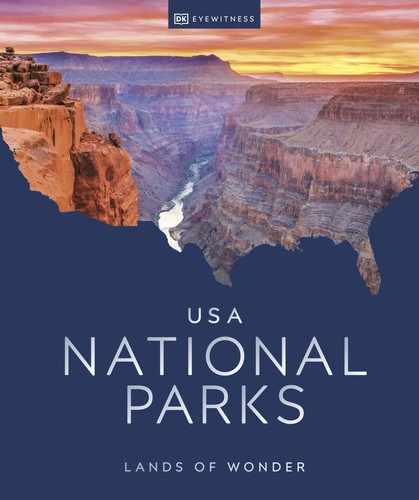
New Mexico
WHITE SANDS
ESTABLISHED 2019
At America’s youngest national park, a rolling sea of white spreads across the New Mexico desert, as if a snowy avalanche toppled from distant mountains yet refuses to melt beneath a relentless sun. This is more than just a park: this is an ethereal world.
The mountain-ringed Tularosa Basin hoards a rare white jewel: the largest gypsum dune field on earth, much of it contained within White Sands National Park. These magical dunes were formed after the evaporation of an ancient sea, leaving behind gypsum in the form of selenite crystals. Weathering and erosion break down the crystals into grains, which are carried by winds to form the dunes. Every day the dune field reinvents itself as the winds reshape the contours.
![]()
The most peaceful time to visit is October, when summer crowds have departed, days are sunny, and it’s the last month of the year for full-moon hikes.
White Sands has witnessed a remarkable span of human history and technological advancement. More than 10,000 years ago, Paleo-Indians were hunting mammoths here with hand-thrown spears. Today the park borders White Sands Missile Range, site of the first atomic bomb detonation and birthplace of America’s space program. The earliest tests on rockets that paved the way for a journey to the moon were conducted amid these pale and peaceful dunes.
Despite the harsh conditions, more than 800 animal species eke out a living here. Most, like the kit fox, are nocturnal, leaving patterns of tracks for you to decipher in the daytime. Small animals such as the Apache pocket mouse have evolved a white coloration, concealing them from predators, and plants also adopt strategies to survive in the ever-shifting sands. A visit to this incredible park offers a glimpse of a different world, where the scars of the land are healed with every single breeze.

Waves of white gypsum dunes push toward a distant horizon at the park, extending for 276 sq miles (715 sq km)
Did You Know?
The White Sands pupfish survives in micro-habitats in and around the park, and nowhere else in the world.
Ways to Explore

Camp ▷ Nothing beats the otherworldly vision of the sun rising and setting over the alabaster dunes. Experience this glory by grabbing a permit, hiking to the heart of the dunes, and pitching your tent on the sparkling sand.
Picnic Head to one of the tables dotted around the park for a dining spot with heavenly vistas. Since gypsum doesn’t absorb heat from the sun, the dunes remain cool, so kick off your shoes to feel the sand between your toes.

Sled ▷ Don’t resist the urge to go sledding in this glistening wonderland. Waxed plastic snow saucers work best, so purchase one at the park’s gift shop and enjoy the ride.
Walk Marvel at the park’s expanse on one of its short walking trails. Loop through the bright sand interspersed with shrubs on the Dune Life Nature Trail, or follow the leisurely Interdune Boardwalk, a wheelchair-accessible connector between two large dunes.

Night watch ▷ Once a month rangers lead a short hike to witness the rising of the full moon. Seeing the dunes awash in milky moonlight is a sublime experience you will long remember.
Hike The strenuous Alkali Flat Trail, a 5-mile (8-km) loop, plunges into the dune field, skirting the edge of parched Lake Otero. Set off before sunset to see the dunes painted in delicate hues.
